#laurent fairon
Explore tagged Tumblr posts
Text





V/A
"Polaroids & Music Cassettes [Turritopsis nutricula (for 35mm Dia Slides)]"
(LP. Psych.KG. 2018) [DE/US/CH/FR]
youtube
#compilation#2018#abstract#experimental#diy#laurent fairon#cody brant#Kommissar Hjuler Und Frau#magnus palsson#louis juker#paul fuchs#zoro babel#mama bar#germany#records#concrete#electronic#Youtube
2 notes
·
View notes
Audio
Listen/purchase: Elektronische tsimtsum by Laurent Fairon
New album:
Laurent Fairon – Elecktronische tsimtsum
01 Écoute construite (4:22) 02 Elecktronische TsimTsum (18:53) 03 Rire hérité (6:39) 04 Holodomor (9:49) 05 Cadastre (11:39)
Total time: 51mn 25s
Electroacoustic and musique concrète recorded from February to May 2021 in Paris, France.
6 notes
·
View notes
Link
"(...) is a collection of remarkably evocative aural miniatures built with the simplest of means. Akin to lucid dreaming, the music invites free associations in the mind of the listener. This kind of effect couldn't be achieved with mere ambient music, which tends to focus the mind of the listener on (pretty much) nothing. It requires a talented composer."
Laurent Fairon about Multi Natural:
The LP is OOP, but the cassette version is out next week: https://edicoescn.bandcamp.com/album/multi-natural
0 notes
Photo

Lucrecia Dalt's Late Junction Mixtape on BBC 3 https://www.bbc.co.uk/programmes/b0b5j1g4
A 27 minute-long piece featuringDon The Tiger, Paul Arámbula, Jan Jelinek, Silvia Kastel, Mike Kitcher,Adam Asnan, Rubén Patiño, Arnau Sala Saez, Native Instrument, Richard Horowitz, Velarde Melanie, Francesco Cavaliere, Typhonian Highlife, Phew, Delmore FX, Beate Bartel, Laurent Fairon and more!
0 notes
Video
vimeo
TSUKU BOSHI / Nocturne / MNAAG from Julien Beau on Vimeo.
Inspirées par le voyage d’Émile Guimet, par la vivacité du trait et la tendresse du regard de Félix Régamey, les performances des différents artistes s’attachent à revisiter les archives visuelles et sonores avec un regard contemporain et poétique. Le temps d’une soirée, le musée crée des espaces de rencontres, d’échanges et de découvertes. Par une expression artistique collective, les artistes portent un nouveau regard sur le musée, son histoire et ses archives.
Le label Tsuku Boshi invite des musiciens de différentes nationalités à participer à la création d’une grande fresque sonore composée à partir des archives sonores du musée. Une station d’écoute des disques 33t issus de la collection du musée (sous réserve) et un acousmonium de la compagnie Alcôme baignent les visiteurs dans les archives sonores du MNAAG.
Avec : AKM, Meryll Ampe, Armando Balice, Julien Beau, Ludwig Berger, Daniel Cabanzo, Thomas Carteron, Chra, Maria Costa, Tomoyoshi Date, dZouLia, Laurent Fairon, Livia Giovaninetti, Cyril Gourvat, Hippies wearing muzzles, Hogo, Masashi Isai, Kassel Jaeger, Yamori Kota, Philippe Lamy, Vincent Laubeuf, Nicolas Marty, Mokuhen, Nicolas Montgermont, Asako Miyaki, Ocean Viva Silver, Mika Oki, Gaetan Parseihian, Audrey Poujoula, Fabio Perletta, Paul Ramage, Maylis Raynal, Sebastien Roux, Alexandra Spence, Sustained Memories, Hideki Umezawa, Valerie Vivancos, Francois Wong, Philippe Zulaica
Nocturne – Voyages imaginés Samedi 3 février – 17h/22h Cour khmère
0 notes
Text
On You are Know Entering Zimbabwe
“While this music is both fairly boring and utterly weird, there is something quite fascinating in these stubborn sound explorations.”
— Laurent Fairon
0 notes
Text





Rainier LERICOLAIS & Jacques DORVAL
"88 Constellations, pour Orgue de Barbarie"
(CDr. [no label]. 2010) [FR]
0 notes
Text

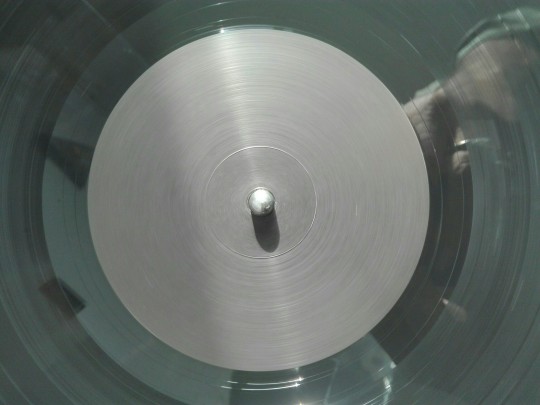
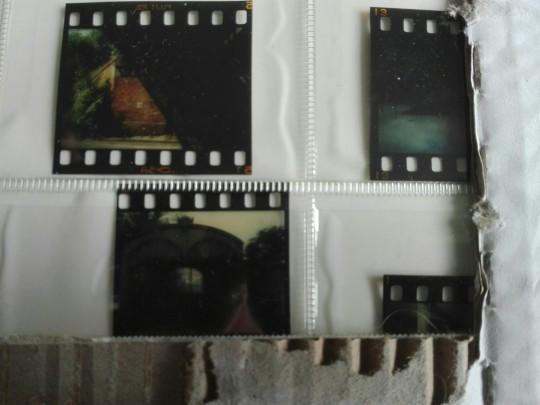

V/A
"Turritopsis nutricula (for 35mm Dia Slides)"
(LP. Psych.KG. 2018) [DE/US/CH/FR]
youtube
#compilation#2018#germany#laurent fairon#cody brant#kommissar hjuler und frau#magnus palsson#louis jucker#paul fuchs#zoro babel#mama bar#sound poetry#electronic#experimental#abstract#records#Youtube
3 notes
·
View notes
Text



Laurent FAIRON
"Musique isotype"
(CD. Entr'Acte. 2016 / rec. 2015) [FR]
youtube
3 notes
·
View notes
Audio
New album, free download.
Musique concrète suite for bullroarer, church organ, cimbalom, vocoder, boat horns, Romanian Catholic choir, Indian ashram temple bell, Radio Afghanistan station ID, and other aural ablutions. Researching melodic patterns in musique concrète. Recorded in July–August, 2021 in Paris and Poitiers, France. L.F.: found sounds, samples, loops, sound collage, virtual synth, artwork.
15 notes
·
View notes
Text




Music reviews by Laurent Fairon, March 2021
C. M. Slenko – Red Patience (January 2021) Tine Surel Lange – Works for Listening 1-10 (March 2021) 李帶菓 Li Daiguo – 笑功 Xiao Gong (March 2021) James Caldwell – Pocket Music (March 2021)
. . . . . . . . . . . . .
C. M. Slenko – Red Patience (Sioux Trails Records) https://siouxtrails.bandcamp.com/album/red-patience
A mini-album of experimental Americana by US guitarist C. M. Slenko. Only three 8–9mn tracks, but each comprising different themes, sketches or ideas, forming an audio diary of sorts, intended to look and sound like a demo. C. M. Slenko plays electric guitar, Farfisa organ and drum machine to create lo-fi blues guitar music mixed with 1980s New Wave, with echoes of Will Oldham, The Durutti Column or Neil Young's Dead Man OST. There are some tentative vocals from Slenko, especially on the opener, but mostly these are exquisite, depressing instrumental songs. The 2nd track is interrupted by a found lullaby song from a female Soul singer, awkwardly embedded in the track like an homage, I presume. Despite it's messy and sketchy appearance, Red Patience contains some beautiful themes I've been enjoying during repeated listenings.
Tine Surel Lange – Works for Listening 1-10 (Sofa Music) https://sofamusic.bandcamp.com/album/works-for-listening-1-10
Debut album from Norwegian sound artist Tine Surel Lange, born in 1989, with already a lot of experience in sound installations, video art and mutli-channel sound technology, among other things. Works for Listening is a collection of musique concrète études based on samples of everyday objects: knife and fork, tap-water in a sink, stone, wire. These are then processed through well-known, classical techniques of musique concrète: a sound is stretched exaggeratedly, becoming a mere texture ; panning is used to create stereo effects ; a percussive sound is contrasted with the same sound played much faster at a higher pitch, or slowed down to provide bass ; etc. The sampler is Surel Lange's instrument, rather than the microphone, and she focuses her attention on the minutest particulars of electronic sound treatment. Reverb, delay and EQ-ing are what makes this album really shine. It was actually originally recorded with the Ambisonics surround sound system in professional studios, so obviously the purpose of these Works is to explore 3D sound possibilities – reduced here to a beautiful stereo. For my own taste, however, I would have enjoyed more gritting sounds and less stereotyped sound treatments, but this is still a fine album.
李帶菓 Li Daiguo – 笑功 Xiao Gong (WV Sorcerer Productions) https://wvsorcerer.bandcamp.com/album/xiao-gong
US-born, Chinese composer Li Daiguo (b.1981) offers here one of his strongest albums to date, with tracks recorded in 2015-2016 in Dali, Yunnan, where he lives since 2004. Though Li Daiguo is proficient on a variety of Chinese traditional music instruments like pipa or guzheng –cf. his superb 2020 duo with Lao Dan on Old Heaven Books–, this solo album is definitely an experimental project. On the best tracks here, electronically-processed acoustic instruments are confronted with radical electronic sound processing in a rich musical dialogue. Occasionally the sound of the instrument is processed beyond recognition, on the verge of pure electronic music. Other tracks are more straightforward, one acoustic instrument playing a few notes, graced perhaps with discrete sound effects. In any case, the artist is summoning interesting sound textures and atmospheres throughout. Far from being an East-meets-West fusion project, this is an exploration of the potential of ancient string instruments when coupled with contemporary electroacoustic sound processing. Some unnecessary tracks could have been edited, though, and 45mn would have been better than one hour. But there is some stunning music in here.
James Caldwell – Pocket Music (self released) https://james-caldwell.bandcamp.com/album/pocket-music
A collection of musique concrète études for found objects and small hand percussion by Illinois educator, curator and musician James Caldwell – his first release, apparently. Each track explores the sonic potential of small, everyday objects in terms of texture, resonance and percussive dimension. The original sounds are completed with synthesizer, electronic effects and post processing with a great integration of acoustic and electronic sounds, combined in a very natural, fluid way. The nuanced and creative use of sound effects (reverb, flanger, sampling, electronic tonalities) and collage elevates each track to the dimension of a small musique concrète étude. Perhaps more contrasts in pitch, texture or resonance would have enhanced the music's impact, the album being a bit monotonous as it is. It would be great to hear this composer broaden his scope and work with more varied source recordings.
22 notes
·
View notes
Photo

Mesías Maiguashca – Música para cinta magnética (+) instrumentos (1967-1989) 2xLP, Buh Records, April 2021 https://buhrecords.bandcamp.com/album/m-sica-para-cinta-magn-tica-instrumentos-1967-1989
Another carefully curated, landmark release from Peruvian label Buh Records, after their reissue of the legendary Walter Smetak LPs. This time it's an anthology of Ecuadorian electroacoustic music composer Mesías Maiguashca, born in Quito in 1938. After classical music studies in Ecuador and abroad (USA, Argentina, Germany), Maiguashca relocated to Germany in the mid-1960s where he worked in famous studios like Cologne's WDR, Karlsruhe's ZKM as well as Paris' IRCAM, and has since led an international career as educator, composer and performer. Titled 'Music for magnetic tape and instruments', this 2xLP is an overview of Maiguashca's work circa 1967–89 encompassing musique concrète, electroacoustic composition, as well as electronic music combined with live instruments like percussion, string quartet or organ.
The album starts with the musique concrète piece Ayayayayay, from 1971, a brilliant tape recorder collage from a variety of outdoor sound recordings done in Ecuador, including environmental and street recordings, animals, conversations, radio broadcasts, political speech or folk music. Cleverly assembled, sometimes transformed through ring modulator or other sound effect, these sounds are in a constant dialogue between each other and contrasted with synthesizer –the latter used as counterpoint, transition device or simply texture– to form a lively and colorful soundscape, at times nostalgic or ironic.The earliest and shortest piece here is El Mundo En Que Vivimos [The World We Live In], from 1967, a great musique concrète collage of found sounds and electronic music. We hear folk music instruments like koto or shô, as well as Western string instruments and bells, all interknitted with pure electronic tonalities from some voltage controller or what sounds like radio waves and static noise. Tape-manipulated parts are a real joy to listen and I only wish the piece would be a little longer.
The other works on the disc combine live instruments with electronic music. Intensidad y Altura, from 1979, is a piece for percussion instruments and synthesizer. The percussion –drum, cymbal, marimba, gong– favors non rhythmic, semi-aleatoric sounds while the synthesizer itself alternates between church organ-like, long-held notes and sequences of very nuanced and subtle, tape-manipulated synth sounds. Various modes of dialogue between percussion and synthesizer are explored throughout with an extreme attention to pitch and tone – the title means Intensity and Pitch. Whether in contrast or in homophony, these sounds at times combine into some purely magical sound epiphanies.
Composed in 1989, The Wings of Perception I is part of a cycle of 6 compositions inspired by books of Carlos Castañeda. The string quartet part uses advanced playing techniques of contemporary music (glissando, pizzicato, sforzando, noises, etc), à la Ligeti or Lachenman. The tape section was recorded using a specially-build cubic structure with various hanging metal objects used to create specific, unpitched sounds. For my own taste, though, this percussion section is a bit subdued in the final mix and the string section a tad too polished and conventional, so that nothing really stands out in the end.
Nemos Orgel (1989) pairs church organ played by Zsigmond Szathmáry with prerecorded organ and synthesizer sounds from an earlier 1971 Maiguashca piece titled Übungen. Inspired by Jules Verne's Twenty Thousand Leagues Under the Sea, this is a wonderful exploration of organ textures and abstract, long-held synthesizer notes, creating a truly mystic and otherworldly music. The analog synthesizer takes the lead in the second half and the music becomes rather weird at times. The entire piece succeeds in offering a beautiful, organic amalgamation of acoustic and electronic sounds, an apt equivalent of Captain Nemo's fantastic underwater organ.
As you can see, the Música Para Cinta Magnética anthology is a fine selection of tracks and comes with superb sound quality, a perfect introduction to Mesías Maiguashca's work.
[review by Laurent Fairon]
18 notes
·
View notes
Audio
New album Rithmomachie, July 2021. Free download. MIDI piano Ragtime approximations programmed in a sequencer, exploring similarities between mechanical piano, tack piano and digital sequencer. A collection of macaronic piano rags, disembodied piano études, Cubist lullabies, pieces for odd number of hands, and other impossible piano configurations. Additionally, some tracks feature radical piano sound manipulations and grotesque sound effects.
11 notes
·
View notes
Photo
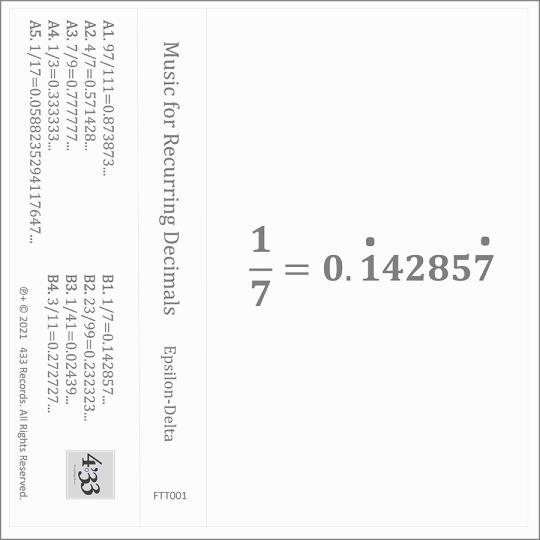

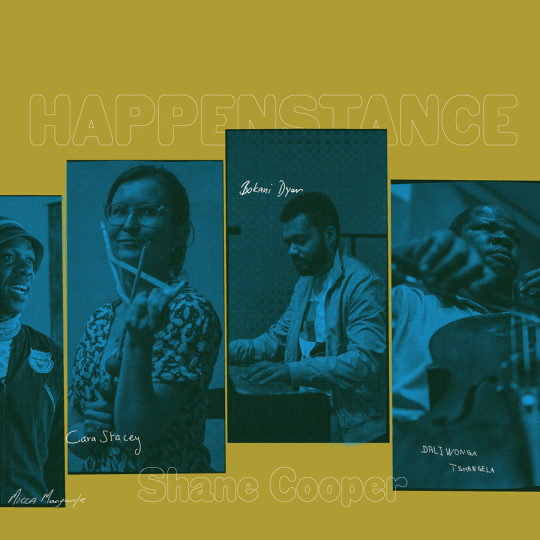


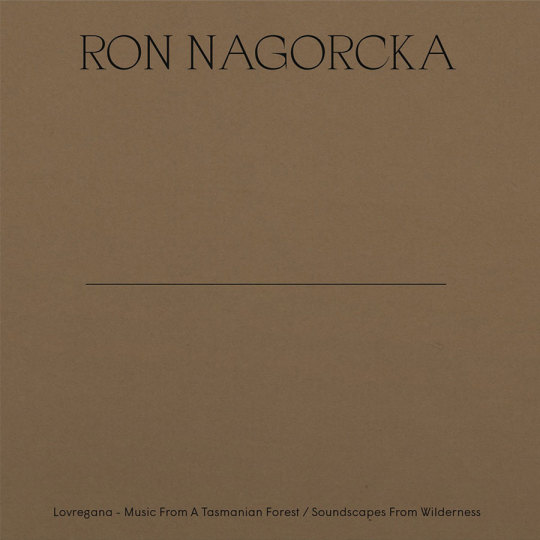
Music reviews by Laurent Fairon, July 2021 Epsilon-Delta – Music for Recurring Decimals (March 2021) Dino Felipe – The Gardeners (June 2021) Shane Cooper – Happenstance (June 2021) RhaD – Metamusic (June 2021) Angel Bat Dawid – Hush Harbor Mixtape Vol. 1 Doxology (June 2021) Ron Nagorcka – Lovregana - Music From A Tasmanian Forest (July 2021)
Epsilon-Delta – Music for Recurring Decimals (433 Records) https://433records.bandcamp.com/album/music-for-recurring-decimals Lovely collection of short, poetic synth sequences build on simple mathematical algorithms by Hong Kong mathematician Addy Choi working under the Epsilon-Delta alias. Algorithms are based on decimal fractions like 4/7, 7/9 or 3/11, using the resulting digits as the basis for the sequence. Far from being arid or too cerebral, the tracks are poetic and varied thanks to the beautiful MIDI synth sounds chosen by the programmer, who is also a clever musician apparently. Tracks may be repetitive but the album isn't. This is textbook Systems Music as practiced in the U.K. during the 1980s by the likes of The Dead Goldfish Ensemble or The Lost Jockey. Exquisite album.
Dino Felipe – The Gardeners (self release) https://dino-felipe.bandcamp.com/album/the-gardeners Mini-LP of 16 very short tracks by Miami-based electronic musician with previous full length releases on ¡Mayday! and Schematic. The music on The Gardeners is based on samples, sound collages, occasional beats and various sound treatments like speed modification, sound stretching, accumulation, heavy reverb, or else. Felipe thus creates colorful and humorous vignettes based on ethnic music snippets, found vocals, musique concrète or cheap electronic sounds. Glitch-y textures abound, as well as grotesque sounds and weird juxtapositions, the music being deliciously direction-less and erratic.
Shane Cooper – Happenstance (Kit Records) https://kitrecs.bandcamp.com/album/happenstance Gorgeous ambient, ethnic and experimental jazz music by South African double bass player and multi-instrumentalist Shane Cooper. The album is actually constructed as a collage of short excerpts from sessions recorded with Johannesburg guest musicians in 2020. The whole project was commissioned by contemporary artist William Kentridge's The Centre for the Less Good Idea, an artist run facility he founded in Johannesburg to promote local independent art projects. Cooper obviously selected the interesting and relevant parts from two days' worth of collective improvisations and the 2 side-long tracks of Happenstance are bursting with ideas and surprises. The 1st side is rather varied in instrumentation, including superb piano and cello parts, lush Rhodes electric keyboard notes and incredible South African traditional instruments played by Cara Stacey. The music is moody and adventurous, jumping gracefully all over the place. The flip side is more about exploring rhythm textures and deep bass sounds and features Shane Cooper on double bass along 3 percussionists. The collage technique is applied here as well, producing pleasant mood changes and exciting U-turns. Cooper delivers a variety of sounds on his instrument, from walking bass lines to long-held notes played with arco (briefly played backward at some point), and also performs beautiful electric bass guitar parts with reverb. The non-linearity and unpredictability of the collage strategy used in Happenstance ensures the music is keeping away from jazz music's clichés and each new listen is surprising and interesting. Two more episodes were recorded during these sessions and are available on YouTube and other platforms, like the vocal only piece called 'Tongues'.
RhaD – Metamusic (Unexplained Sounds Group) https://unexplainedsoundsgroup.bandcamp.com/album/metamusic Standing for Research for Historical Audio Documents, RhaD is a musical project by Italian music activist Raffaele Pezzella, also known as electronic music producer Sonologyst, as well as Unexplained Sounds Group label director and publisher, not to mention radio host and sound researcher, among others. Metamusic is a 40mn sound collage of mysterious radio transmissions, found vocals, spoken words, vintage electronic sounds and a number of guest stars on classical music instruments like organ, guitar, bass or piano – respectively Michael Bonaventure, Stefan Schmidt, Daniel Barbiero, Francesco Arrighi and Mara Lepore. Adroitly avoiding any ca 2021 digital artifact along the way, Metamusic's sound design is bringing the listener back to the glorious 1960s and '70s, yet the music sounds rather timeless to these ears. Metamusic recreates the sound of early European avantgarde with plenty of tape manipulations, sound collages, buzzing sounds, French spoken word and contemporary classical music instruments. The sound crafting is superb, the collage technique creating an ever-changing musical soundscape full of weird sounds, grotesque sound manipulations and Surrealist juxtapositions. What's not to love?
Angel Bat Dawid – Hush Harbor Mixtape Vol. 1 Doxology (International Anthem) https://intlanthem.bandcamp.com/album/hush-harbor-mixtape-vol-1-doxology Very personal and original album by Angel Bat Dawid, a US clarinet player, singer, electronic musician and DJ from Chicago. Created with a few sounds and a minimum of means, devoid of spectacular solo outing, these mostly desolate tracks form a meditative musical travelogue through the Black people psyche. Track titles deal with themes of slavery, racism, and Black culture tropes, though neither the occasional lyrics nor the strange music on offer here can pass for angry or vindicatory, the music being far too personal for that. The clarinet confers a neo-classical atmosphere to some of the tracks, sometimes interestingly contrasted with synthesizer sounds or electronic beats. Harmonica and vocals on Autotune also contribute to the unique sound signature of this album, with occasional hints at gospel and rural blues. Playing in continuous mode in a kind of stream-of-consciousness style, the music would work just fine as a soundtrack to a Kara Walker exhibition—Bat Dawid actually composed the soundtrack to a Yoko Ono outdoor installation in 2020. On a side note, she also released the Harkening Etudes mini album on Longform Editions earlier in April 2021, where her classically-trained clarinet playing is contrasted with sampled piano accompaniment and electronically processed vocals in a series of short, bizarre classical music études, also worth checking out.
Ron Nagorcka – Lovregana - Music From A Tasmanian Forest (Invisibilia) https://invisibilia.bandcamp.com/album/lovregana-music-from-a-tasmanian-forest-1990-soundscapes-from-wilderness-1988 This CD reissue combines 2 cassette tapes of manipulated field recordings by Australian composer Ron Nagorcka, born 1948, namely 'Lovregana - Music from a Tasmanian Forest', 1990, and 'Soundscapes from Wilderness', from 1988. Both are based on bird recordings from northern Tasmania island, where Nagorcka relocated in 1988, building himself a house and makeshift, solar-powered recording studio deep in the primeval forest. On Lovregana, short samples of bird songs are run through a sampler and harmonized in just intonation, producing eerie soundscapes of disembodied and supernatural bird singing. The music is reconstructing a fictional and artificial forest populated by dozens of birds, some far in the distance, some near ; some slowly developing a song, others performing in sudden bursts, with a variety and unpredictability akin to actual birds in nature. To this, Nagorcka adds minimal electronic loops in the background, dreamy synthesizer notes in strange tunings and discreet didgeridoo playing, all very well integrated to the sampled bird songs. These tracks are thus poetical evocations of a primeval forest via electronic sounds. While Lovregana's tracks more or less focused on one specific bird song at a time, the two tracks of 'Soundscapes from Wilderness' take a more holistic approach to nature recordings. The 1st track, 'Black Forest, Victoria', is a reconstruction of the deep forest sounds via the accumulation of various field recordings, creating a particularly dense soundscape through layers and layers of nature recordings. Here again, the natural-vs-artificial dichotomy is what interests the composer, and arguably this forest never existed, it was rather reconstructed in the studio. The 2nd track, 'Rainforest in Northern Tasmania', uses forest sounds as the basis for slow, mysterious didgeridoo improvisations, perhaps examining how the musician can dialog with the environment, being a part of it, being one with it. The superb didjeridoo playing is what fascinates most here. . . .
11 notes
·
View notes
Audio
Short, to-the-point electronic tracks exploring MIDI sound possibilities and pseudo-Vocoder abuse. Some electro beats appear here and there, simile-analog synth creeps everywhere, but mostly the focus is on the weird side of electronic music.
Spelled in German fashion for extra impact, the ‘Lexicon Katapult’ concept refers to recurring, abstract Vocoder utterances in the music as well as whimsical individual track titles—mostly actual English words plus French portmanteau words of my own design.
Recorded January–April 2021.
10 notes
·
View notes
Photo
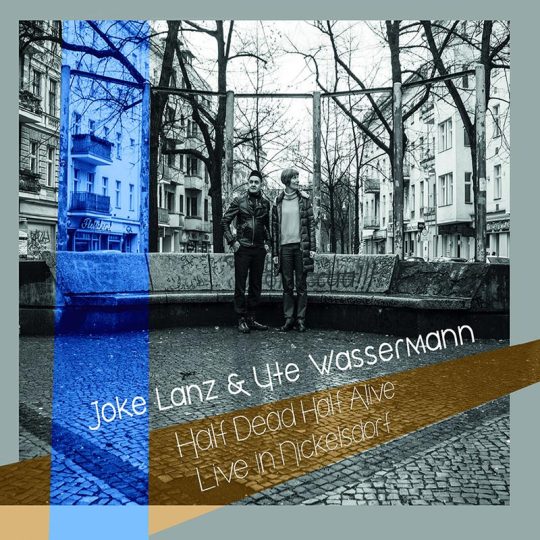
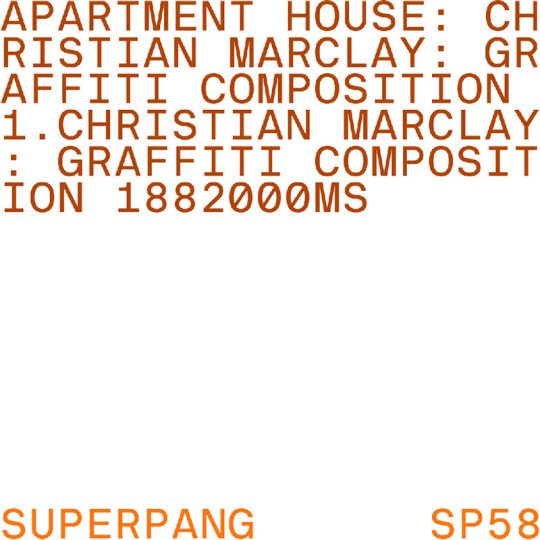

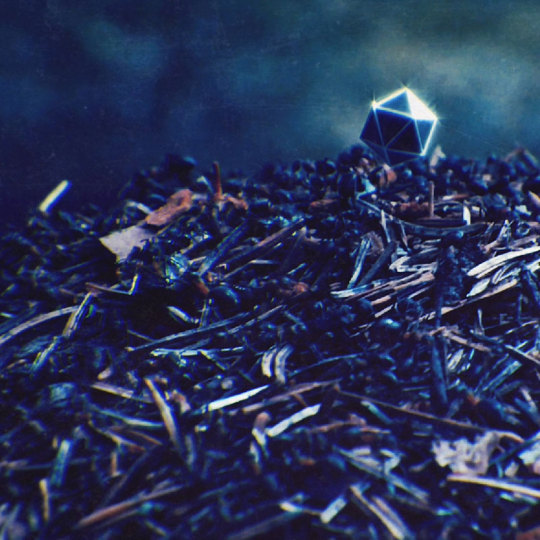
Music reviews by Laurent Fairon, April 2021
Ute Wassermann und Joke Lanz – Half Dead Half Alive (February 2021) Christian Marclay – Graffiti Composition (March 2021) Louis Dufort – Volume (March 2021) Makunouchi Bento – Post-Muzica 34 (April 2021)
. . . . . . . . . . . . .
Ute Wassermann und Joke Lanz – Half Dead Half Alive - Live In Nickelsdorf (Klanggalerie) https://klanggalerie.bandcamp.com/album/half-dead-half-alive-live-in-nickelsdorf
Sound poetry and sound collage duet by German vocalist Ute Wassermann with Swiss turntablist and noise artist Joke Lanz, formerly of Sudden Infant and Schimpfluch groups, recorded live during a performance in Germany in 2019. Ute Wassermann's vocal range is astonishing, from high shrieks to gargling to deep low moans, and she proffers an incredible variety of utterances and noises here, while also complementing her vocals with toy instruments and bird whistles. Joke Lanz plays found vinyl records, special dubplates and sampler—perhaps the bespoke sampling function of a Technics turntable. Some sounds from records are recognizable, like child babble, film music, spoken word, accordion, Japanese shamisen traditional, or even techno, but most of the sampling only plays a fraction of a sound, sometimes reduced to a mere pulp or abstract texture. The duo's music is jumping all over the place in search of new sound combinations, and the album is constantly playful and fun throughout thanks to many unexpected U-turns.
Christian Marclay – Graffiti Composition (Superpang) https://superpang.bandcamp.com/album/christian-marclay-graffiti-composition
This is a new version of Christian Marclay's 1996 Graffiti Composition, a graphic score created from thousands of blank sheet music papers posted in Berlin streets for passers-by to graffiti over. Their anonymous contributions apparently included actual notated music and words as well as any kind of blotches Marclay eventually collected and assembled into a graphic score. Graffiti Composition was premiered in the UK in 2005 by an instrumental ensemble led by Steve Beresford, and then recorded by a New York guitar quintet including Elliott Sharp and Lee Ranaldo in 2006—also available on Bandcamp. This new version is interpreted here by British avant-garde music ensemble Apartment House, and they manage to elevate Graffiti Composition to a gorgeous sound art piece for piano, cello, flute, harp, synthesizer, toy instruments, vocal interjections and noises, all superbly played by ensemble members. While the score itself is a semi-aleatoric assemblage of unconnected abstract parts, it ultimately sounds here like a Fluxus event mixed with classical contemporary music. Apartment House leader Anton Lukoszevieze delivers a great performance on cello, yet he shall also be credited for providing coherence to the original collage work, here delivered as a decent piece of contemporary music in itself, both playful and great fun to listen.
Louis Dufort – Volume (Superpang) https://superpang.bandcamp.com/album/volume
Canadian Louis Dufort, born 1970 in Montréal, is a composer of electronic and electroacoustic music, contemporary instrumental music, as well as compositions combining electronic and acoustic instruments. His music is published by the Empreintes DIGITALes and Pogus labels, among others. Volume is a series of 5 electroacoustic compositions for environmental sound recordings and synthesizer, mingled into dense, homogenous textures with a variety of sound events occuring at all times. Spectacular electroacoustic sound treatments are at work here, with a profusion of radical EQ-ing, algorithmic sound processing effects and stereo positioning, all deliciously ear-tickling, especially on headphones. Unfortunately, both orginal location recordings—rain, stones, stones throwned into water, footsteps—and sound treatments are a tad too traditional and conform to the Empreintes DIGITALes dogma. While the music is cleverly assembled into a coherent whole, the end result is perhaps too polished and lacks diversity and excitement. This is still superb electroacoustic music but more originality and fresh ideas would have been welcomed.
Makunouchi Bento – Post-Muzica 34 (self released) https://makunouchibento.bandcamp.com/album/post-muzica-34
The duo of Felix Petrescu and Valentin Toma from Timișoara, Makunouchi Bento are the first experimental electronic musicians we heard from Romania 20 years ago—before that, us Westerners only knew of the Romanian composers like Iancu Dumitrescu, Ana-Maria Avram or Costin Miereanu. Post-Muzica 34 is a radiophonic sound art piece Makunouchi Bento created for a Romanian radio broadcast in April 2021. It is entirely based on environmental sound recordings from Timișoara, processed and assembled into an aural narrative, a portrait of their hometown. To the unexpected ear, the music might sound entirely electronic, but in fact is largely based on processed field recordings of trains, car engines, car horns, sirens, birds, animals in a zoo, voices, etc. All original sounds being heavily processed, you have to pay attention to recognize some of them. What you can't fail to notice, though, is the great variety of sound effects applied, the weird, fantastic sounds, and the Surrealist atmosphere of the piece, which is also remarkably assembled into a coherent narrative, almost like a hörspiel. My only complain is the lack of stereo use throughout, perhaps because this was an improvised live broadcast and the duo didn't care for stereo then. This petty drawback only adds to the vintage aspect of Post-Muzica 34, which brought to my mind echoes of Luciano Berio and Bruno Maderna's "Ritratto di Città" [Portrait of a City], 1955, and even Walter Ruttman's silent movie "Berlin, Symphony of a Great City", 1927, in regard to the narrative form. An ambitious hörspiel, Post-Muzica 34 has that kind of historical-cum-avantgarde approach.
7 notes
·
View notes